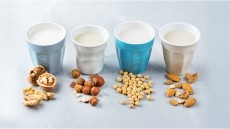Asian Citrus eyes new taste for juice in China
to launch high-value, freshly squeezed orange juice for wealthier
Chinese consumers happy to spend more on convenient food products.
The company has already started producing small volumes of juice and will test the product in Hong Kong and Guangdong region in 2007.
"The Chinese market now is still predominantly a consumer of fresh oranges but there is a trend for juice, which is a more convenient way of consuming the fruit," explained Eric Sung, chief financial officer at the firm.
"In China you don't have any large orange juice producers so we thought, why not do it on our own?," he told AP-Foodtechnology.com.
Like many food and beverage producers, Asian Citrus is closely watching the rapid rise in incomes in China, and looking forward to what is predicted to become the world's third largest consumer market by 2025.
By this time, 59 per cent of Chinese will live in cities and aggregate urban disposable income will have soared to CNY22.6 trillion up from 4.8 trillion in 2005, according to a recent report from consultants at McKinsey.
The juice market has already seen rapid growth in recent years but much of the juice consumed in China is still made from imported concentrate and mixed into juice drinks.
Asian Citrus wants to develop a market for premium, freshly squeezed juice "like the kind available in Starbucks" , said Sung.
"Sunkist used to advertise its oranges but since the 80s its focus is on juice.
When a country becomes wealthier there is more spend on juice and we expect to see this shift in the coastal areas of China," said Sung.
"We see potential for a substantial [juice] market in five to ten years."
The group already has four species in its first plantation and will add a fifth when the second plantation starts bearing fruit next year.
This will give it a larger base to adapt its juices to different tastes.
The company will initially outsource production to a small factory but if the premium juice takes off, it is likely to invest in its own plant for production of the more complex, not-from-concentrate juice such as that produced under the Tropicana brand.
NFC juice can be stored for nine months to a year but requires much more advanced technology.
"We're talking at least one or two years down the line for this," said Sung.
In the meantime, the group will be concentrating on upping its sales to supermarkets.
Asian Citrus has exploited its size - although it only accounted for 2.5 per cent of all oranges produced in China last year, it is still the country's largest plantation - to improve its bargaining power with supermarkets.
This year it doubled its sales to supermarkets, to 20 per cent of its total volumes, allowing it to increase profits on higher selling prices.
When the company sells directly to supermarkets it achieves 15 per cent more in profits -adding the gains typically made by a wholesaler to the farmer's/grower's profit.
"Supermarkets don't want to deal with thousands of different suppliers.
We can offer them a steady, stable supply," said Sung.
It also achieves better prices from suppliers of fertilizers and pesticides, among its highest overheads.
Listing on the London stock exchange last year allowed the company to expand the capital intensive business more rapidly, and it now has 2.8 million trees in two plantations covering 68 square kilometres.
Asian Citrus may look into other citrus products as well as orange exports in the future but for the moment it is focused on China.
"In the long run we want to do exports too but this is a totally different business and we need to do more trial runs and build up our experience in this area.
Our main focus is still the Chinese market and there is still huge potential for growth here before we need to look abroad," said Sung.
Orange consumption among the Chinese population was only 3kg per capita in 2002-03 compared with more than 30kg in Europe and the US.
A large part of the higher orange consumption in western markets is down to the juice intake - the Chinese only consume 0.1 litres per capita compared with 18.5 litres in North America, says Sung.













